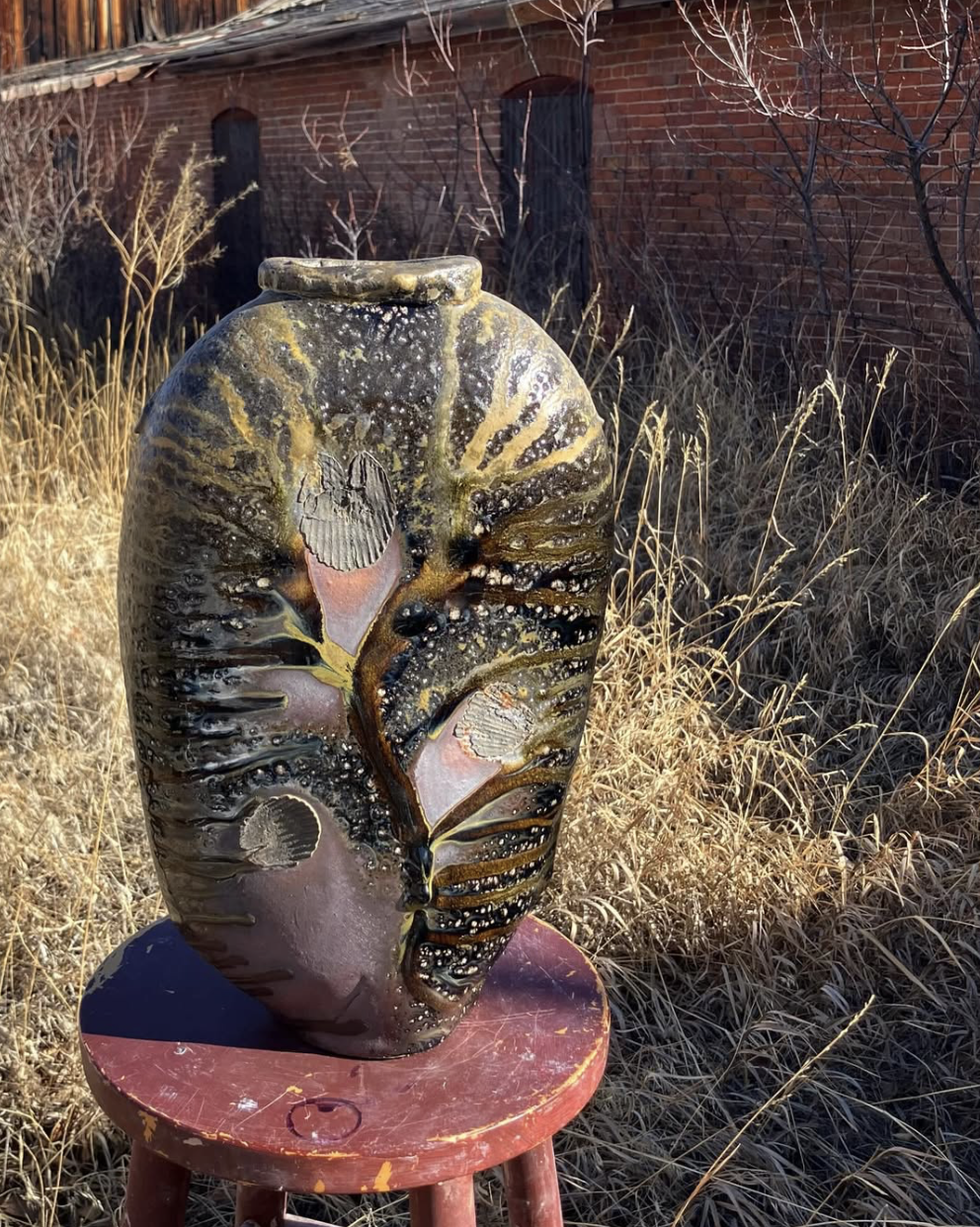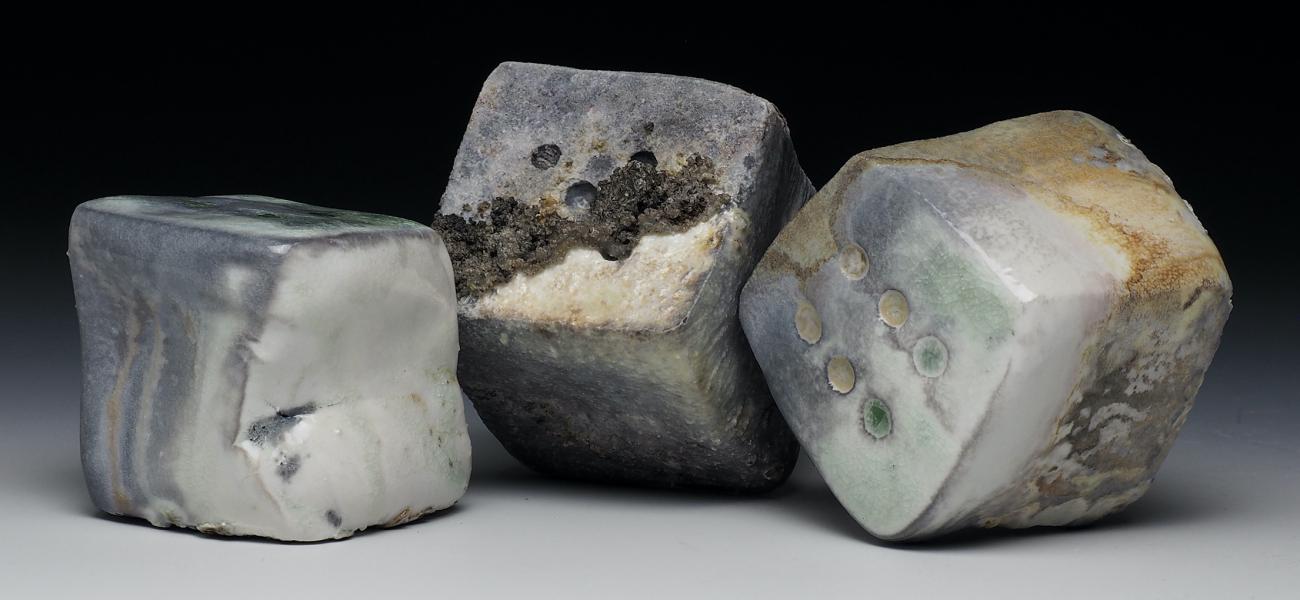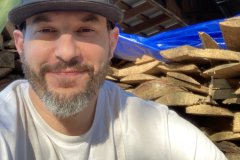Orbiting the Vortex
“It’s its own vortex. It just sucks you in and keeps you here like a whirlpool or a black hole spinning in space. Once you land here, you feel it.” – Nick Schwartz, wood-fire potter, speaking about Mendocino, California.
I feel this way about wood-firing too, and it was the place, the people, and the wood kiln that combined to pull me in. The Mendocino area of Northern California is a magical place. Not only are the landscapes breathtakingly beautiful, but the influence of the hippie migration and the cannabis boom has uniquely affected the region, manifesting an outlaw culture that attracts an array of anomalous collaborators. When I ventured up into the redwoods for the first time to wood-fire, the gravity of The Vortex sucked me into its orbit.
I used to paint on canvas and work with clay in high school. I had enough interest in it that I decided to put a portfolio together and apply to art school when it was time for college. That did not work out. Art school turned me off. It was debilitating in a way and didn’t stoke enough creativity in me. So much focus was put on making a career for yourself and not just the making, and I didn’t meet the right mentors to set me loose in the studio. So I decided to become a sports writer instead! Pretty weird! I transferred to a different school to pursue journalism, and as a result, I worked for two newspapers, an NBA franchise, and eventually a university athletic department. It felt unnatural being in an office at times, in front of a computer, having to dress up for work. At some point, I left that behind, too. I traveled, worked various jobs, and drifted further into limbo as time passed. I was never very certain what I should be doing with my life, always envious of people who were so sure about what they wanted to be “when they grew up.”
Randomly, in 2017, I decided I’d take a workshop at Penland School of Craft in western North Carolina. Being from North Carolina, Penland had been on my radar, and my mom encouraged me to go. I was thirty-three years old, and it had been about ten years since I touched clay. The plan was to sign up for the eight-week spring clay concentration regardless of the instructor or the subject. It was just dumb luck that it was Nick Schwartz and wood-fire.
When I interviewed Nick for this article, looking back at our first few weeks together, he described me as being ho-hum about the workshop when we initially met. But when we started wood-firing, I lit up. He said he’s seen it over and over, people having epiphanies being around the wood kiln.
After the concentration, I went to Northern California to stay with Nick and his family and help fire the Flynn Creek Anagama at his studio in Comptche. Seeing his home, studio, and the community he had shaped around himself had a big effect. I saw another path that wasn’t an academic one. I saw how a practice could be about lifestyle first, not just a job or career. I got a glimpse of it when I was at Penland, but when I went to California, it naturally clicked for me. I was instantly drawn to the community, and wood-firing largely shaped this community.
Firing the anagama at Flynn Creek was an event. Anyone and everyone was welcomed and invited to participate. “My experiences with the wood kilns here: you start firing a kiln, and people come out of the woodwork. They just show up. And they’re not even people who are into ceramics. It’s like the spiritual call of the wild or something, and they just come out of nowhere,” Nick said. There were all sorts of interesting people staying at his house or stopping by during a firing, offering an aberrant perspective and exchange of knowledge and experience of ceramics and otherwise. There was an oven built into the back of the anagama for pizza parties during every firing, and Nick would sometimes have his swing band practice in the kiln shed. People leave and move on to other things, but many seem to make their way back up to The Vortex. The current is strong. I’ve left and come back a number of times, including for a residency at the Mendocino Art Center just down the road.
Nick describes his community as fiercely independent and creatively self-reliant, and he serves as a great asset and patron of it. He’s always lending a hand or doing a favor, going on emergency calls as a volunteer firefighter, and letting people stay with him and his family as they pass through, but at the heart of everything was the wood kiln. So much would get done collectively with the trading of goods and sweat, including kilns being built as a favor to a friend. One time, Nick traded his kiln-building services for tattoos. A good group firing a wood kiln is a microcosm of a thriving community, and firing the anagama at Flynn Creek fed and made everything vibrant around it for the artists in the area and beyond.
It would turn out that, as I got deeper into the culture of wood-firing, I discovered that I have a love-hate relationship with the collaboration wood-firing requires, but Nick always navigated bringing a group together beautifully, and it felt special being a part of those groups. I never saw him turn anyone away or get impatient and not take the time to teach someone about his experience and passion for wood-firing. This isn’t always the case, and I wish I were more like him in many ways. I’m a cynic, dwell in the negative, and make my world smaller at times. Nick always opened his up. That’s something I enjoy about wood-firing and clay: being part of a community and not shutting myself off. Being part of something much bigger, a speck in an ancient tradition, and contributing to an ongoing dialogue with the past. Propping up the people who came before me and helping those who come along with me and after. I see it as more than a vocation. Nick sees it as his identity. Northern California opened my eyes to something more than school could give me.
Since my first visit to Mendocino, I’ve gone on to many places to fire other kilns. I’ve met so many people surrounding the clay studio and the wood kiln. After Flynn Creek, I went to Japan twice to work as a studio assistant for Nick’s good friend, John Dix. Japan gave me a lot of fuel, as it did for many that went before me. There’s a fascination and infatuation with it by Western potters, and so many make the pilgrimage. I was blown away by the pots I saw while working there. “I think it’s important, at least in wood-firing and in craft, to be aware of where your influences come from and what traditions you’re working within. A lot of what we do is informed aesthetically and process-wise by the potters of Japan,” Nick said. He spent time studying pottery in Japan before me, like many others.
After helping both Nick and John as an assistant, I hopped on the residency circuit. I’m now in my second year as a long-term resident artist at the Archie Bray Foundation in Helena, Montana, my eighth residency since the concentration at Penland.

Sometimes I wonder if the particulars matter and if the work I’m making is merely circumstantial. People are concerned with aesthetic and conceptual meaning, and while I am continuously making aesthetic choices and agonizing over them, I think I’m more interested in the process. It’s therapeutic to come to the studio day after day to tinker, and carve, and hollow, and test in preparation for a firing. This exercise permits me to let the world fade into the background as I focus on the work, getting better, and what’s directly in front of me.
Wood-firing did pull me into clay, and I'm hypnotized by the surfaces and dramatic pieces that come out of a week-long anagama firing, but there’s so much more to it than making aesthetically pleasing objects. It’s icing if we get nice pieces out of the kiln that others respond to. Regardless of my philosophical grappling, I feel very lucky that I found the wood kiln and got shot out of this cannon. I feel lucky that for the first time in my life, I am strongly motivated and ambitious in some way. I’m drawn to the struggle that comes with working in clay and the difficult task of finding peace as a maker. I love the measured grind of navigating toward more defined goals creatively and trying to achieve them technically, and I feel fortunate to be spending my days building momentum in a discipline of such a complex and demanding nature.
I’m sure as time goes on, I’ll continue to get pulled back up to the headlands of the Pacific Ocean to help fire or build a kiln and see old friends. That seems like a nice way to kill this time. Nick has built close to twenty wood kilns in Northern California since he moved to the area in the late 90s, and with them, a wood-firing destination. He and his family moved to a new property in 2021, in Albion, CA, and I went back in 2022 to help him build the new anagama. Cider Creek Collective is their new studio, and Nick and his wife, Jess Thompson, also a seasoned potter, started a more formal residency at the property where they host workshops and community wood-firings.
Nick says our stories aren’t dissimilar, and it’s the same for many potters. So many get hooked on wood-firing and the lifestyle after being exposed to it. You always hear the same clichés about wood-firing, but they are true. You’re not supposed to use clichés when writing journalistic pieces, but sometimes it’s difficult. It’s hard to describe what’s special about wood-firing without using them. The appeal of the wood kiln is universal. So be cautious if you wander north of the Golden Gate. The Vortex will grab hold of you and won’t let go.


